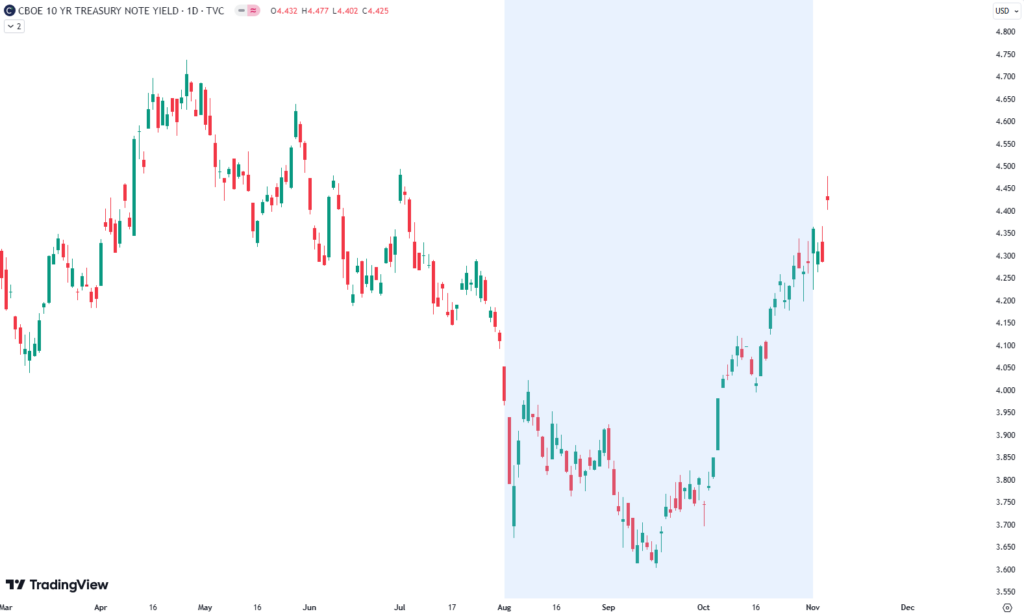Exploring the 10-Year U.S. Treasury Yield: Seasonal Patterns and Investment Insights
The 10-year U.S. Treasury yield follows a notable seasonal pattern, typically rising in August, September, and October each year since 2016. During these months, the yield has usually increased by 22–40 basis points, although certain years, such as 2022 and 2023, saw surges of 100–150 basis points. The pattern is highlighted on a long-term chart, emphasizing the yield’s consistent upward trend each fall. This year’s 2024 trend was no exception, starting at 4% in August, dipping to 3.6% in September, and then sharply rising to 4.45% by November.

Sie fragen sich, wann Sie als Investor Aleihen kaufen sollten? Entdecken Sie unsere maßgeschneiderten Dienstleistungen und schließen Sie sich unserer wachsenden Gemeinschaft von Do-it-yourself-Investoren an, die sich mit unserer Anleitung erfolgreich auf dem Markt zurechtgefunden haben.
Premium Guide
Advanced Investing Signals
139€ / Monat
Basic Guide
Basic Investing
Signals
49€ / Monat
Simple Guide
Selected
Signals
Kostenfrei
Congratulations! You’ve discovered your new free financial guide. Sign up for our most popular service, the Simple Guide.
Why Yields Matter for Bond Investors
For bond investors, this pattern is significant due to the inverse relationship between bond prices and yields: when yields rise, bond prices fall, and vice versa. Currently, yields are high, which translates to lower bond prices—a situation often referred to as “oversold.” With the 10-year yield appearing “overbought” (meaning prices have risen to a level that may not hold long-term), a pullback could be on the horizon. If the yield does decline, bond prices may rebound, providing a potentially favorable opportunity for buyers.

November’s Trend and Potential Investment Timing
Historically, the upward trend in yields tends to stabilize in November, often leading to a decline that could benefit bond investors. With yields currently elevated, the situation aligns well with the seasonal pattern. As bond prices and yields move inversely, now could be a good time for those seeking to buy bonds at lower prices. This seasonal trend, paired with the yield’s overbought status, suggests a ripe moment for long-term bond investors looking to capitalize on potential yield declines and price increases.
Understanding these patterns and how they affect bond investments provides an insightful edge, especially as the market heads toward year-end. Whether buying bonds or keeping an eye on interest rate movements, recognizing the 10-year Treasury yield’s seasonal tendencies can help investors better time their investment strategies in the bond market.
The world of finance can be complex, with many technical terms. For explanations of financial terminology, try using the Investopedia dictionary.

Schreibe einen Kommentar